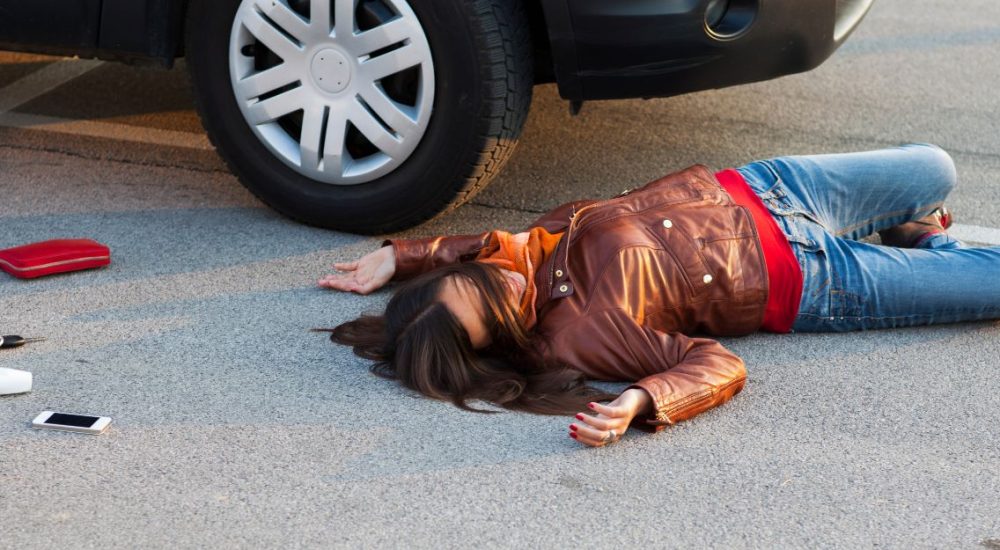Car vs. Pedestrian Accident in Texas: Who Is at Fault?
Texas is home to several of the largest and most populous cities in the nation. This includes millions of drivers and pedestrians crossing busy streets and intersections every day. When a car strikes a pedestrian, it can be difficult to understand and determine who is at fault. While the driver is almost always assumed to be at fault, the actual circumstances are not always so clear. Several factors go into establishing and proving fault in pedestrian collisions.
If you’ve been in an auto accident that involves an injured pedestrian, it is vital that you seek the help of a qualified Texas attorney who can review the details of your case and help in rightly determining fault. Often, the accident occurs as the result of actions on the part of the pedestrian, releasing the driver of some or all the responsibility for the collision.
Your Texas Accident Attorneys: Stevenson & Murray
Proving fault in an auto accident can be a complex and detailed process. It is essential that you have an experienced and skilled attorney on your side who can ensure that all the details of the accident are taken into consideration by both the insurance companies and the courts. The team at Stevenson & Murray has decades of experience in negotiating diligently on their clients’ behalf, earning respect and recognition throughout the local legal community.
Our attorneys get started right away in gathering evidence and obtaining witness testimonies that provide a thorough account of the events that led to the collision. They leave nothing to assumptions and do not allow insurance companies to assume fault on the driver, all while fighting for their client’s rights.
How Is Fault Determined in Texas?
Auto accidents and collisions happen because someone was negligent or was in some way acting unlawfully. In every case, at least one of several potential factors must be demonstrated through evidence gathered in the case:
- An unlawful act was committed. If one of the parties failed to follow traffic or road laws, or directly broke the law during any action that led to the accident, they would be assigned partial or complete fault for the collision. Unlawful acts for a pedestrian include jaywalking, failing to obey traffic signals, or walking in prohibited areas.
- There was negligence. If one of the parties failed to provide a duty of care owed to the other party, they would be considered negligent. Examples of pedestrian negligence include failure to yield to traffic, making sudden or unexpected movements in or out of traffic, crossing while distracted, or walking while under the influence of drugs or alcohol.
All parties owe a duty of care to one another in traffic. They must observe and obey all traffic laws and stay aware of all changing environmental factors, such as weather conditions or construction in the roadways. Failing to reasonably adapt and behave appropriately to these conditions constitutes negligence.
How Fault in the Accident Determines Liability
Texas is a tort state, meaning that the party at fault for an accident is held legally and financially responsible for all damages resulting from the accident, including personal injuries and property damage. Fault can be delineated to various parties fully or partially. When any party is determined to be at fault for an accident, they will owe damages commensurate with their percentage of fault.
For example, a pedestrian who is deemed to be 20% at fault for a collision would be able to recover 80% of all damages, such as medical bills and lost work. However, Texas has a threshold of 51% for fault in which an injured party can still recover damages. This means that a pedestrian who is found to be at least 51% at fault for an accident would not be legally allowed to pursue a claim against the driver to recover any damages.
FAQs
Q: Can Pedestrians Be Legally at Fault for Causing a Crash in Texas?
A: Yes. Pedestrians in Texas can be held legally responsible for being at fault in causing a crash. Everyone, whether they are a driver or a pedestrian, is responsible for following all traffic laws and road rules and for adapting to circumstances and conditions, such as weather. A pedestrian who is acting illegally or is otherwise not observing all applicable laws, and then causes an accident as a result, can be partially or completely at fault for the accident.
Q: Who Is Likely to Be Blamed for a Pedestrian Accident?
A: When there is a vehicle collision with a pedestrian, the driver of the vehicle will likely share some or all the fault in most cases. However, there are no set standards to predetermine fault in these types of collisions. Fault will lie with whoever was acting illegally or negligently, provided that their actions, in whole or in part, directly led to the accident. While there can often be a bias towards a presumed pedestrian right-of-way, fault should never be assumed.
Q: Is Texas a No-Fault State for Accidents?
A: No, Texas is not a no-fault state for accidents. This means that Texas law holds the party who is at fault for the accident responsible for paying all damages owed to each party, including personal injuries and property damage resulting from the accident. For this reason, determining and proving fault in an accident is vital. Hiring a Texas accident lawyer to review the evidence in your case is the most secure way of establishing fault.
Q: How Would You Determine Who Was at Fault in a Pedestrian Collision?
A: In a pedestrian collision, as with other types of auto accidents, determining fault involves proving that one or more parties’ negligence directly caused or led to the accident in question. The at-fault party could be the driver, the pedestrian, or another third party, such as the city or the driver’s employer. Fault is assigned in cases where evidence is provided that establishes that an unlawful or negligent act was committed that led to the collision.
Contact Stevenson & Murray
If you are a driver involved in a collision with a pedestrian, reach out to a member of our team at Stevenson & Murray today for a consultation. No one should be held legally or financially responsible for an accident based on assumptions or biases. Our experienced attorneys can review the specific details of your case and fight to ensure that the pedestrian in your collision is held accountable for their own negligent actions. Contact us today to get started.

Get Help Today
Request a Free Consultation
"*" indicates required fields


